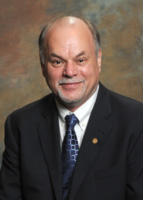Editorial
Front Page - Friday, August 20, 2010
Polygraph examiners target truthfulness, not nervousness, in testing
Erica Tuggle
 Dan Sosnowski, president of the American Polygraph Association and a certified polygraph examiner for 30 years, calls the polygraph examination process both a science and an art. Although the test is not 100 percent accurate, he says, given the right situation, it can be easily accurate in the 90th percentile.
- Photo provided
Dan Sosnowski, president of the American Polygraph Association and a certified polygraph examiner for 30 years, calls the polygraph examination process both a science and an art. Although the test is not 100 percent accurate, he says, given the right situation, it can be easily accurate in the 90th percentile.
- Photo provided
White lies are defined as “minor lies, which could be considered harmless, or even beneficial, in the long term … and are also considered to be used for greater good.”
Yet, for certified polygraph examiner Don Sosnowski, president of the American Polygraph Association and in the business for 30 years, his daily task is to sniff out a lie of any variety, and expose it for the good of the business, agency or law enforcement that requests the polygraph service.
Sosnowski graduated from accredited polygraph school John Reed and Associates in May of 1980 and now owns SOS Polygraph Services in Marietta, Ga. He says although the polygraph may seem like a relatively new technology, the idea for a criminal deception device started in 1895 with the Italian criminologist Cesare Lombroso. Lombroso used a device called a plethysmograph during interrogation and measured a subject’s pulse during the proceedings. Later on, in 1804, the first machine to be called a polygraph was invented by Englishman John Isaac Hawkins. Between then and now, many have had a hand in developing the modern day polygraph examination procedure, Sosnowski says.
Today, the polygraph ma-chine measures several different parameters in order to detect truthfulness. The respiration parameter looks at the thoracic and abdominal areas, and cardio, blood volume and pulse rate are also examined. Finally, the test looks at electro dermal activity, which is just a fancy term for sweat gland activity.
All of these factors are reliable to test, because of the body’s natural reaction to certain types of stress in preparation to combat the stress whether a person wants it to or not, Sosnowski says.
“If you are driving down the street and a car cuts in front of you and you slam on the brakes, automatically your heart rate increases, your breathing changes and sweat gland activity could change,” he says. “When some type of potential danger is presented to an individual, we respond automatically like that.”
Sweating, increased heart rate and body tension are also all factors of something that is not related to lying: nervousness. Sonowski says one of the biggest misunderstandings of the polygraph machine is if someone is nervous, they are going to fail their polygraph test. Setting the record straight, he says nervousness alone will not cause someone to fail a polygraph.
“We expect everyone to be nervous from the time they walk in to the time they walk out. But you can’t really be nervous on one question and not another question,” he says.
More polygraph myths come from television and movies, he says, where those tested are immediately strapped in, given a ten-minute interrogation and then automatically know their results. In reality, polygraph tests may take up to four hours, depending on the complexity of the case.
“What people need to know is that the polygraph is both a science and an art,” he says. “It has been researched and validated. It is not 100 percent, but we think given the right situation it could be easily in the 90th percentile.”
He says the public should know that anytime a screening tool is utilized, it needs to meet and follow certain guidelines and standards. He says the Voice Stress Analysis currently used in Tennessee is an example of an invention that uses computerized voice stress monitoring on potential suspects, but does not meet necessary standards or have independent studies validating its effectiveness.
To become a certified poly-graph examiner, an individual must attend an American Polygraph association approved training facility and be inspected on a regular basis. He says the training is generally 10 weeks in duration, five days a week and averages around 400 hours of training in a variety of psychology, physiology and interview tactics. This ensures that someone is not going to a week’s worth of training, and then claiming to be an expert, he says.
The U.S. government in the intelligence community, postal inspectors, the Army, Air Force, criminal investigation division and almost all law enforcement at the federal and state level use polygraph services, Sosnowski says. It is used in a variety of ways from investigating criminal activity, freeing people from suspicion, screening potential hires for employment and by criminal defense attorneys to prove their clients are not involved. Now there is a huge influx of calls for polygraph services in Georgia and Tennessee for convicted sex offenders to make sure they are following probation guidelines and treatment and are not repeating offenses, he says.
The American Polygraph Association also works to keep everyone within the field up
to date on established standards and regulations and ensure that polygraph tests are conducted
in a correct and professional
manner. The APA was established in 1966 and now has approximately 3,000 members in 35 different countries.
|
|